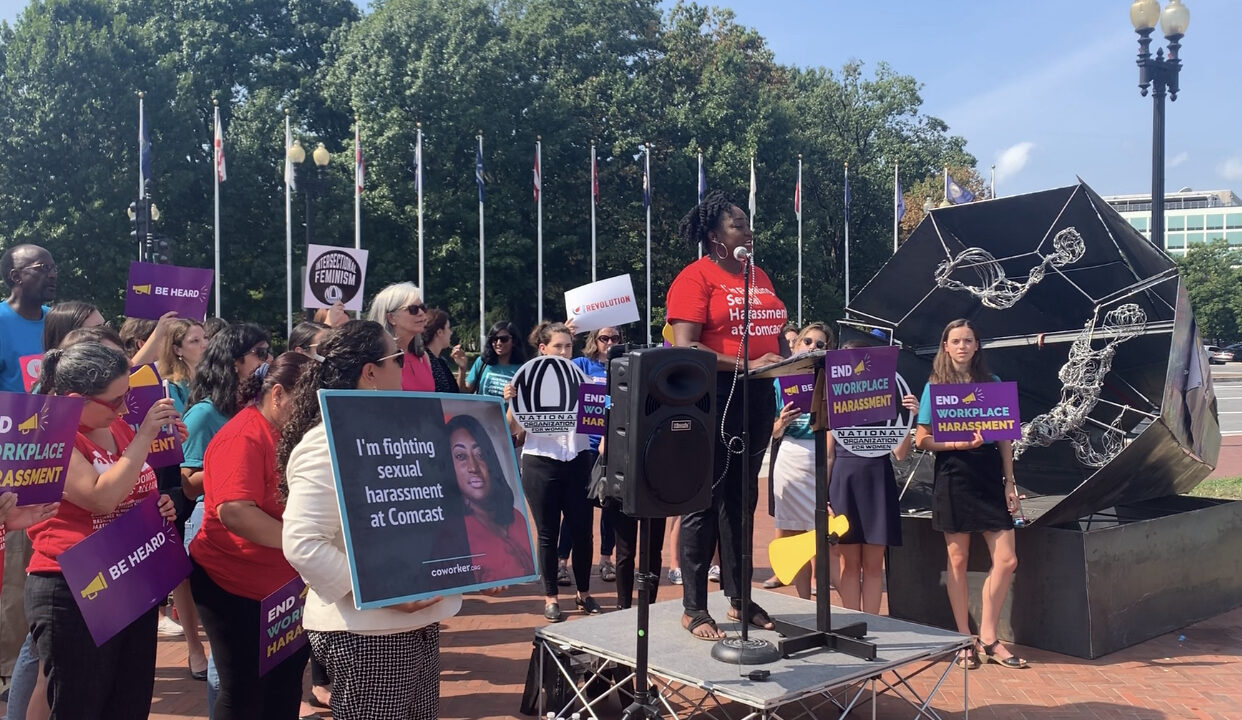For the first time in decades, the labor movement is back in the popular imagination. Leaders who reject concentrated power, extractive economic systems, and authoritarian workplaces are increasingly mainstream. We have robust communications and messaging infrastructure through journals (like this one), magazines, and podcasts, as well as growing community organizing and social infrastructure through aligned movements like the Movement for Black Lives, the immigrant and migrant rights movements, and the Democratic Socialists of America.
There’s broad public support for worker-initiated uprisings like the 2018 teachers’ strikes, the Google Walkout, gig worker actions, unionization in digital media, and the Amazon Warehouse Worker strikes. Smaller actions, such as salary transparency campaigns, worker walkouts, and public protests against race-based pay disparities, have also proliferated across the architecture, museum, publishing, advertising, food media and fitness industries.
Workplace organizing is flourishing in many forms, increasing the number of people who feel a sense of personal connection to the labor movement. And much of this energy was building before every system of care and protection crumbled under the pressure of the pandemic and as weeks of protests and years of social movement work have forced a reckoning with our brutal system of racist policing and social control. We’re in a moment full of possibility, ripe for reimagining how power is constructed in this country and for realizing the long-term goals for democratic governance of our economy.
What is consistent among the movements that have engaged millions of people over the past few years is the decentralized nature of their emergence. In most cases, the organizing developed organically among people compelled to act and inspired by the tactics they’d seen other people share on social media rather than via top down mobilizations. In the realm of workplace organizing, efforts like info-sharing spreadsheets, internal or public petitions, and even walkouts have become meme-able actions that, especially in the past few years, have proliferated through workplaces and industries. The easy replicability of these tactics enables people who are new to organizing to get started fairly quickly, creating an entry point into labor organizing that’s easier to access than a full-fledged union election campaign.
These qualities represent key components of decentralized organizing, which enables anyone, anywhere to lead a campaign to change something in their workplace or community. As more people start and join these campaigns, they form distributed networks of like-minded organizers, building baseline infrastructure for organizing. As Jonah Furman has noted on the decentralized organizing model the United Electrical Workers established in partnership with DSA, “Our hypothesis is that, through a distributed model, we can scale short-term workplace organizing, identify ‘hot shops’ where workers are ready to take action, and seed networks that build worker power, working- class leadership, and infrastructure, especially in non-union sectors and workplaces.”
Coworker was established eight years ago in order to establish some loose and useful structure around this approach to workplace organizing. We provide a place online where people who are new to organizing can get ahold of some basic tools, light-touch support, and strategic advice to advance whatever campaign is important to them. While EWOC (with whom we are partnering) seeks to translate some of that energy into union campaigns, at Coworker, we’re also interested in short-term campaigns themselves as centers for experimentation and co-learning.
Through this model, when employee networks grow around one issue, other workers within the same company can launch their own campaigns, generating a self-sustaining hub of activity. We’ve supported large networks at multiple companies like Starbucks, REI, American Airlines, Publix and Uber. The more we learn from each campaign, the more experience we can offer to new petition creators; we foster relationships among different campaigns when possible and share freely what we already know through emails, Medium posts, and open trainings on labor rights and media strategy. The idea is to include as many people as possible in some form of labor action, cultivating a shared sense of purpose with the labor movement.
While we have typically applied this model broadly across multiple kinds of employers, COVID 19 has given us a more industry-specific focus. As shutdowns rolled across the US, many essential workers responded by organizing for paid sick days, hazard pay, PPE, and store closures. Coworker supported more than 250 campaigns in March and April by workers in construction, hospitals, logistics, and food service, but the vast majority of our campaigns were at grocery stores. This started with a hazard pay campaign at Trader Joe’s and rippled across the industry, with identical petitions at Publix, Whole Foods, H-E-B, Market of Choice, and Fred Meyer. Through these campaigns, we made $2/hr the minimum demand for the entire sector (most workers temporarily won these campaigns, with the notable exception of Publix, which offered merit-based raises and gift cards to workers risking their lives). Just as important, as companies roll back hazard pay and re-open locations, the workers remain linked to one another through networks where they can share information, launch new campaigns, and keep public pressure on employers to behave at least somewhat decently.
The aim of the platform has always been to create a welcoming place for new organizers, supporting their growth as leaders and ensuring that their first experience with labor organizing is generative and positive. If we accept that the future of labor hinges on a mass movement of people who feel like workplace representation is something that can and should belong to them, then our duty in this moment is to find as many ways as possible to include them in building that reality.
However, while decentralized organizing provides a successful model for meeting the initial momentum and energy of new organizers, we’ve found that it is primarily suited to bread-and-butter campaigns like wages, dress code policies, and safety. With more complex or personal efforts, we need to supplement campaigning support with deeper connection. As people like Rylinda Rhodes, a former Comcast employee, have begun using our platform to address sexual harassment, we have found that fostering connection among the women who come forward is more important than our usual practices of campaign promotion or media strategy. This is doable for a campaign or two, but it gets more challenging as our reach in an industry grows.
Similarly, as Coworker has become a known source of support for organizing in the tech industry — after hosting campaigns by IBM, Etsy and Oracle employees — we have needed to bring more resources to bear than just campaigning expertise. We were flooded with requests from tech workers experiencing ethical quandaries, harassment from fellow employees, racism, lack of transparency, and a host of other frustrations. Workers in multiple cities asked us to join in-person meetings, provide legal research, and contemplate the differences between organizing around working conditions and the human rights implications of corporate decision-making. Our willingness to meet workers where they are and talk through potential campaigns — usually a strength — ended up putting our staff in the role of counselor without the appropriate background in trauma or mental health necessary to be truly helpful.
It is a constant negotiation: we want to support anyone asking for help, but we also must recognize the limits of what we have to offer. For example, how do Facebook content moderators experiencing secondary trauma from violent and depraved video streams translate that into workplace action without first addressing the mental health impact of their work? Is it possible to combine both? What are the ethics of attempting to do so? These are questions we are actively exploring as we navigate this new terrain.
In the context of the cascading crises of COVID-19 and the violent state backlash against the uprisings for Black lives — as well as the systemic failures of institutions to address these interlocking crises — it is necessary to address the fact that people are experiencing death, illness, and acts of violence within the context of their organizing. Decentralized models create an on-ramp to addressing these issues through organizing campaigns but should be supplemented with intentional efforts to deepen the connections between people so they may also provide care to one another.
At Coworker, we’ve focused our learning over the past few years on digital campaigning, but we’re currently looking more toward worker leadership and collective care. We want to figure out how to help people who have an interest in creating support networks for their coworkers more than running campaigns around specific workplace policies. We’ll be running experiments in collective, decentralized peer care with worker leaders while continuing to support the campaigns that new organizers bring to our doorstep.
No matter what form it takes, we need to resource and support open space for experimentation led by workers in order to sustain the energy and momentum around organizing in this moment. Decentralized organizing models, where we hold the reins loosely and focus on leader support, create the welcoming space necessary for that experimentation to take place and are critical to establishing a culture in which organizing feels within the reach of all people. That culture of organizing provides the seedbed for more participatory governance, where we are all democratic actors, owning the future for our workplaces, economies, and communities.

